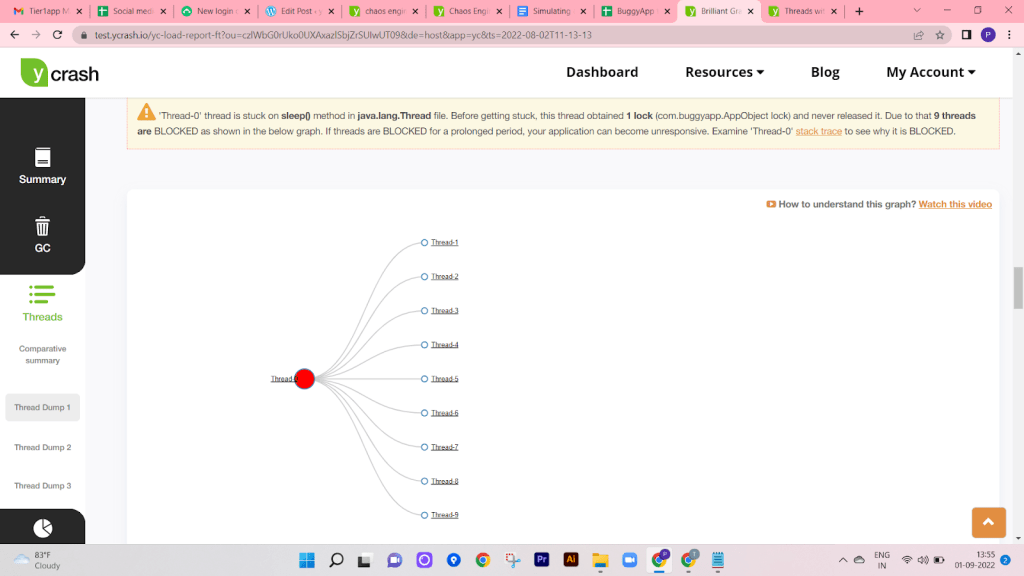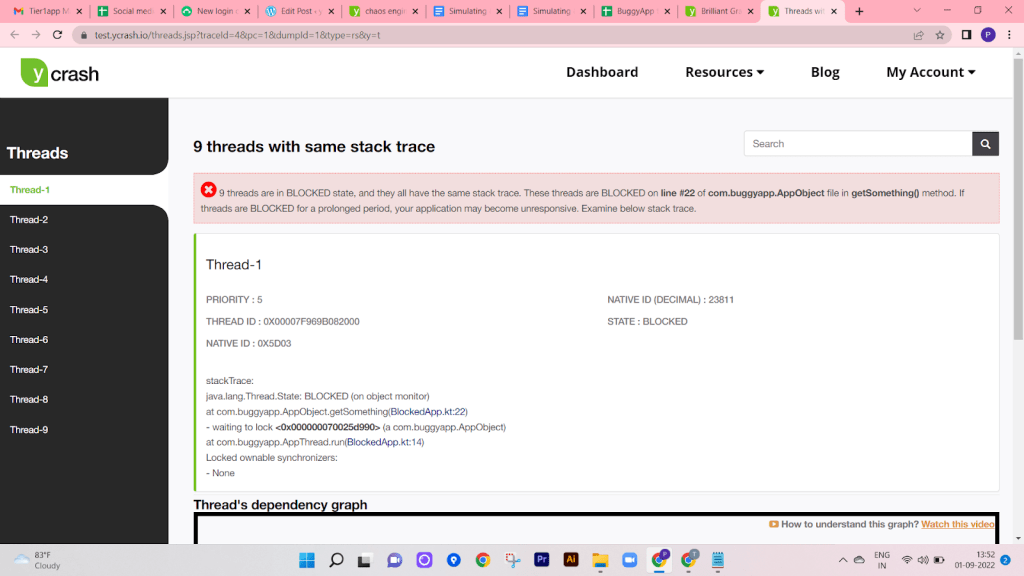Simulating & troubleshooting BLOCKED threads in Kotlin
In this series of simulating and troubleshooting performance problems in Kotlin, let’s discuss how to make threads go into BLOCKED state. A thread will enter into a BLOCKED state when it couldn’t acquire a lock on an object because another thread already holds the lock on the same object and doesn’t release it.
Kotlin blocked thread Program
Here is a sample program, which would make threads go into BLOCKED state.
package com.buggyapp
class BlockedApp {
fun start() {
println("BlockedApp:started")
for (counter in 0..9) { // Launch 10 threads.
AppThread().start()
}
}
}
class AppThread : Thread() {
override fun run() {
AppObject.something
}
}
object AppObject {
@get:Synchronized
val something: Unit
get() {
while (true) {
try {
Thread.sleep(6000000.toLong())
} catch (e: Exception) {
}
}
}
}
fun main() {
println(BlockedApp().start())
}Sample program contains the ‘BlockedApp’ class. This class has a start() method. In this method, 10 new threads are created. In the AppThread class there is a run() method that invokes getSomething() method on the AppObject. In this getSomething() method, thread is put to continuous sleep i.e. thread is repeatedly sleeping for 10 minutes again and again. But if you notice, the getSomething() method is a synchronized method. Synchronized methods can be executed by only one thread at a time. If any other thread tries to execute the getSomething() method while the previous thread is still working on it, then the new thread will be put in the BLOCKED state.
In this case, 10 threads are launched to execute the getSomething() method. However, only one thread will acquire lock and execute this method, remaining 9 threads will be put in BLOCKED state.
NOTE: If threads are in BLOCKED state for a prolonged period, then application may become unresponsive.
How to diagnose BLOCKED threads?
You can diagnose BLOCKED threads either through a manual or automated approach.
Manual approach
In the manual approach, you need to capture thread dumps as the first step. A thread dump shows all the threads that are in memory and their code execution path. You can capture thread dump using one of the 8 options mentioned here. But an important criteria is: You need to capture thread dump right when the problem is happening (which might be tricky to do). Once the thread dump is captured, you need to manually import the thread dump from your production servers to your local machine and analyze it using thread dump analysis tools like fastThread, samurai.
Automated approach
On the other hand, you can also use yCrash open source script, which would capture 360-degree data (GC log, 3 snapshots of thread dump, heap dump, netstat, iostat, vmstat, top, top -H,…) right when the problem surfaces in the application stack and analyze them instantly to generate root cause analysis report.
We used the automated approach. Below is the root cause analysis report generated by the yCrash tool highlighting the source of the problem.

yCrash prints a transitive dependency graph that shows which threads are getting BLOCKED and who is blocking them. In this transitive graph, you can see ‘Thread-0’ blocking 9 other threads. If you click on the thread names in the graph, you can see the stack trace of that particular thread.

Here is the screenshot that shows the stack trace of the 9 threads which are in BLOCKED state and it’s also pointing out the stack trace in which they are stuck. From the stacktrace you can observe that thread is stuck on ‘com.buggyapp.blockedapp.AppObject#getSomething()’ method.
Equipped with this information, one can easily identify the root cause of the BLOCKED state threads.
Published on Java Code Geeks with permission by Ram Lakshmanan, partner at our JCG program. See the original article here: Simulating & troubleshooting BLOCKED threads in Kotlin Opinions expressed by Java Code Geeks contributors are their own. |



